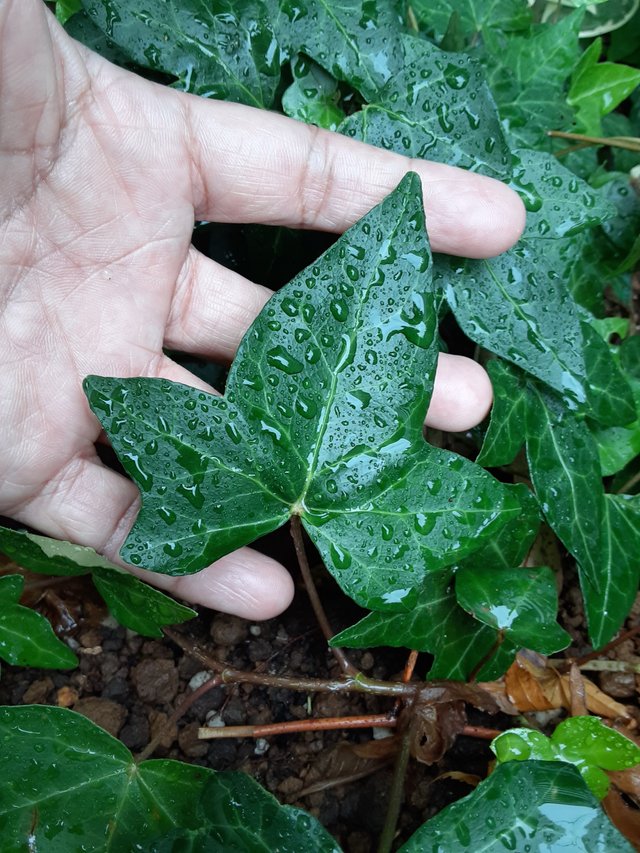
Also known as common ivy, English ivy, or European ivy, Hedera helix is a species of flowering plant in the ivy genus in the family Araliaceae. It is native to most of Europe and western Asia. A rampant, clinging evergreen vine, it is a familiar sight in gardens, waste spaces, and wild areas, where it grows on walls, fences, tree trunks, etc. across its native and introduced habitats.
Hedera helix is an evergreen climbing plant, growing to 20–30 m (66–98 ft) high where suitable surfaces (trees, cliffs, walls) are available, and also growing as groundcover where no vertical surfaces occur. It climbs by means of aerial rootlets with matted pads which cling strongly to the substrate. The ability to climb on surfaces varies with the plants variety and other factors: Hedera helix prefers non-reflective, darker and rough surfaces with near-neutral pH.
The leaves of Hedera helix are opposite, simple, and lobed. The leaf shape varies with the variety, but is typically heart-shaped or five-lobed. The leaves are evergreen in most climates, but may drop in cold winters.
The flowers of Hedera helix are small and white, and are produced in clusters. The flowers are followed by black berries, which are poisonous to humans and animals.
Hedera helix is a popular ornamental plant, and is used for groundcover, hedging, and wall covering. It is also used in traditional medicine, and has been used to treat a variety of ailments, including coughs, colds, and respiratory infections.
Here are some of the benefits of Hedera helix:
- It can help to improve air quality by absorbing pollutants and releasing oxygen.
- It can help to reduce noise pollution by absorbing sound waves.
- It can help to improve the appearance of a home or garden by providing a lush, green backdrop.
- It can help to provide food and shelter for wildlife.
Here are some of the drawbacks of Hedera helix:
- It can be invasive and difficult to control.
- It can damage trees and other plants by smothering them.
- The berries are poisonous to humans and animals.
- The sap from the leaves and stems can irritate the skin.
Overall, Hedera helix is a beautiful and versatile plant that can be used for a variety of purposes. However, it is important to be aware of its potential drawbacks before planting it.
Ref.:
 |  |
Upvoted! Thank you for supporting witness @jswit.
Downvoting a post can decrease pending rewards and make it less visible. Common reasons:
Submit